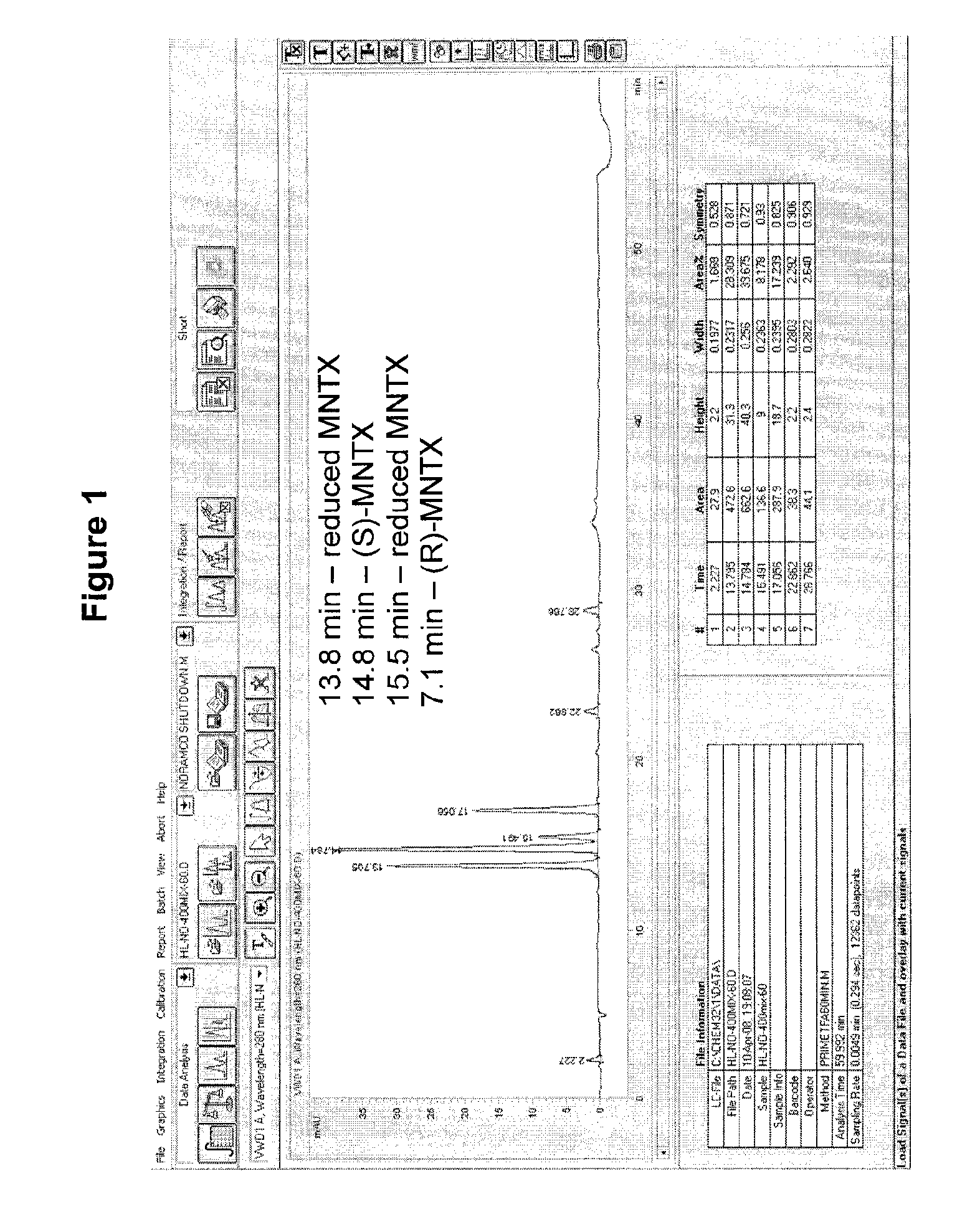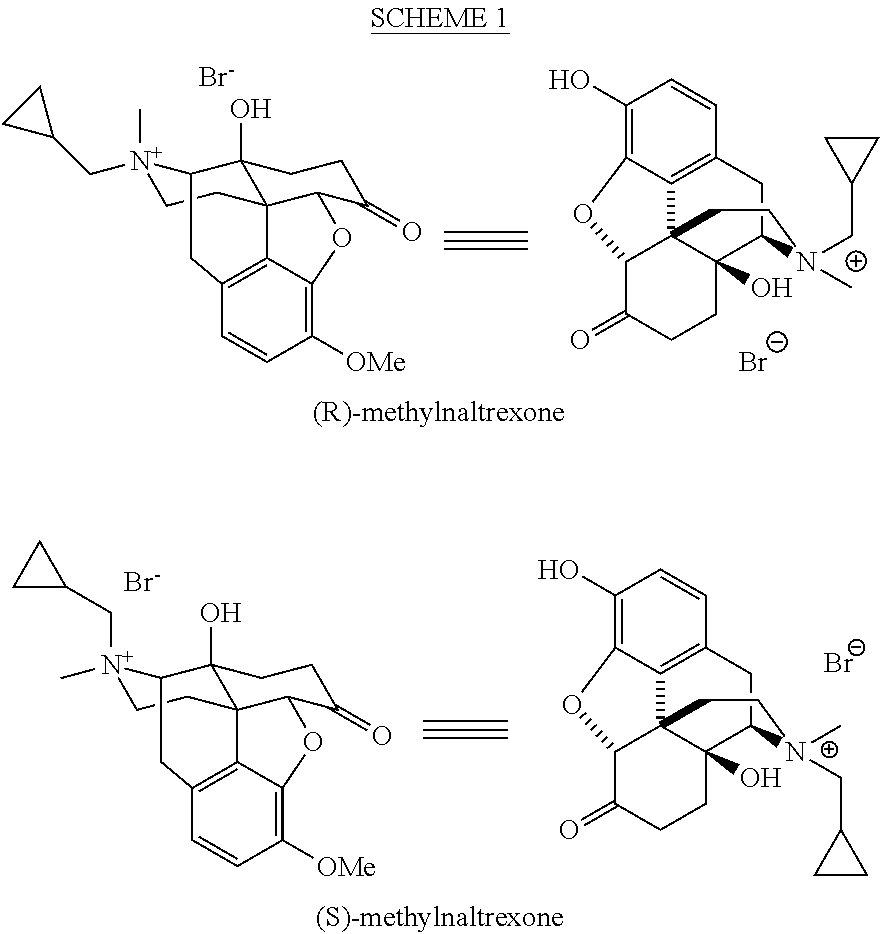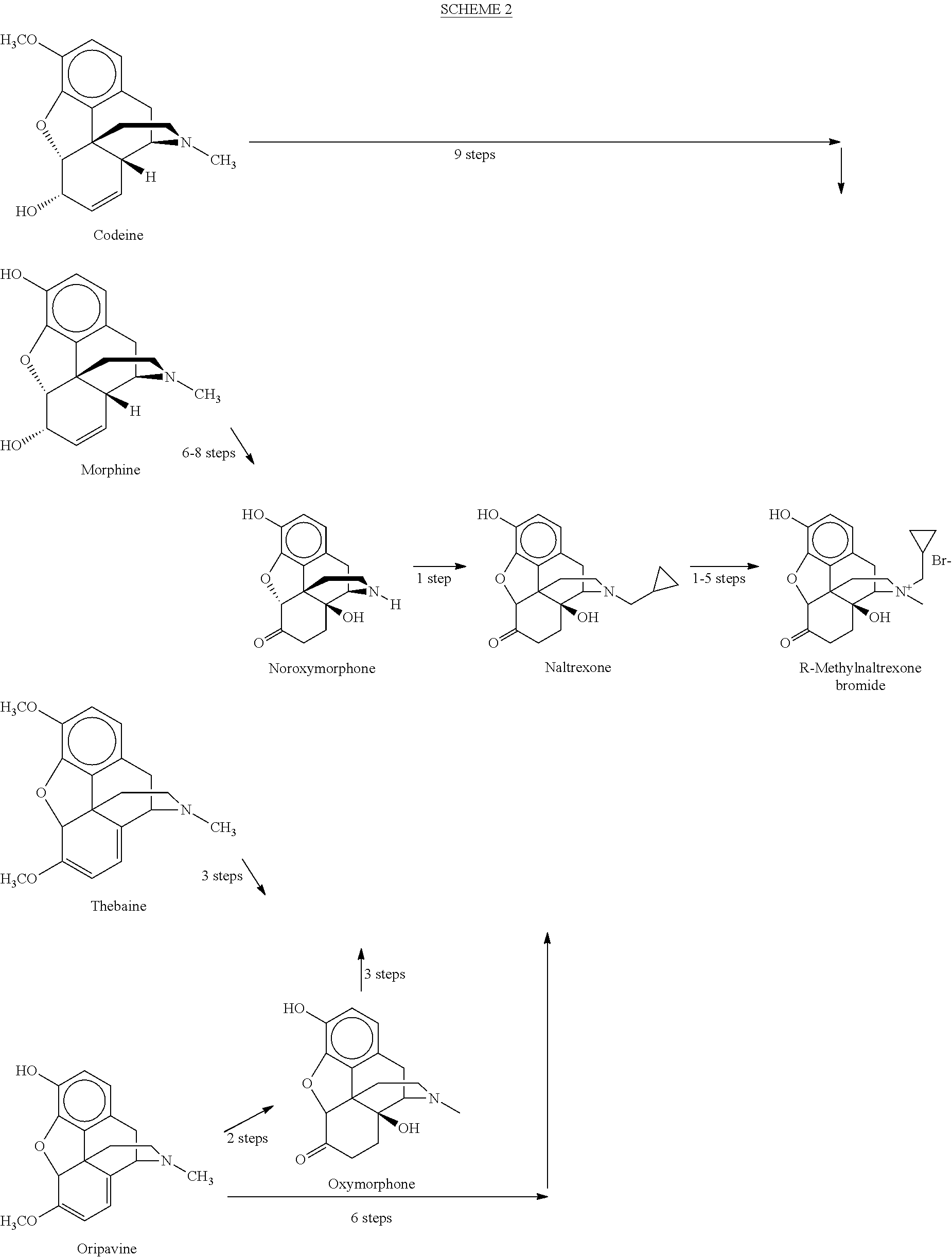Processes for the Preparation of Morphinane and Morphinone Compounds
- Summary
- Abstract
- Description
- Claims
- Application Information
AI Technical Summary
Benefits of technology
Problems solved by technology
Method used
Image
Examples
examples
[0145]The following Examples are set forth to aid in the understanding of the application, and are not intended and should not be construed to limit in any way the application set forth in the claims which follow thereafter.
Materials and Methods
[0146]Liquid reagents were distilled prior to use, while other commercial solids were used as supplied. 1H-, and 13C-NMR spectra were recorded on a Bruker (300 MHz or 600 MHz) spectrometer. All chemical shifts are referenced to tetramethylsilane (TMS) or residual undeuterated solvent (CHCl3, MeOH, H2O) and coupling constants are quoted in Hz. Infrared analyses of liquid compounds were recorded as a thin film on NaCl plates and of solid compounds as KBr discs. Analytical thin-layer chromatography (TLC) was performed on Silicycle 60 Å 250 μm TLC plates with F-254 indicator. Flash column chromatography was performed using Natland 200-400 mesh silica gel. Melting points were recorded on a Hoover Unimelt apparatus and are uncorrected. Mass spectra...
example 1
N-cyclopropylmethylene-nororipavine methylchloride 9a
[0148]To a suspension of oripavine (4) (200 mg; 0.67 mmol) in NMP (3.5 mL) was added (chloromethyl)cyclopropane (0.93 mL; 10.09 mmol) and the reaction mixture was heated in a preheated oil bath at 120° C. for 28 hrs, before it was cooled down to room temperature. The black liquid was filtered through a plug of neutral alumina, and eluted with dichloromethane:MeOH (9:1) followed by elution with MeOH. The organic solvent was removed under reduced pressure. The brown residue was dissolved in MeOH and precipitated with diethylether to give the title compound 9a (148 mg, 55%) as a brown solid. Rf 0.41 (CH2Cl2:MeOH 4:1); mp above 210° C. (MeOH:diethylether); isomeric ratio by HPLC(R:S) 7:1; IR (KBr) 3420, 3196, 3007, 1664, 1591, 1459, 1385, 1244 cm−1; 1H NMR (600 MHz, D2O)R-isomer=6.67 (d, J=8.4 Hz, 1H), 6.62 (d, J=8.4 Hz, 1H), 5.89 (d, J=6.6 Hz, 1H), 5.41 (s, 1H), 5.14 (d, J=6.6 Hz, 1H), 4.54 (d, J=7.2 Hz, 1H), 3.52-3.63 (m, 5H), 3.04...
example 2
N-cyclopropylmethylene-nororipavine methylbromide 9b
[0151]Compound 9a (150 mg, 0.39 mmol) dissolved in minimum amount of H2O:MeOH, 3:1 was filtered through a column packed with Dowex®-1 resin (Sigma, strongly basic bromine loaded, 50-100 mesh) and eluted with dist. H2O (500 mL). The majority of the solvent was removed under reduced pressure. The residue was lyophilized to give the title compound 9b as a white solid (159 mg, 95%). 1H and 13C NMR spectra were identical to spectra of compound 9a. MS (FAB+) 785 [(C22H26NO3)2Br]+.
[0152]Having established efficient conditions for the preparation of the desired (R)-isomer of oripavine cyclopropylmethylchloride salt, the hydroxyl functionality at the C-14 of oripavine can be introduced. Numerous conditions, which have been reported to affect the conversion of thebaine to oxycodone as well as alternative oxidative conditions were screened [a) Freund, M.; Speyer, E. J. Prakt. Chem. 1916, 94, 135-178; b) Gates, M.; Boden, R. M.; Sundararaman P...
PUM
| Property | Measurement | Unit |
|---|---|---|
| Temperature | aaaaa | aaaaa |
| Temperature | aaaaa | aaaaa |
| Temperature | aaaaa | aaaaa |
Abstract
Description
Claims
Application Information
 Login to View More
Login to View More - R&D
- Intellectual Property
- Life Sciences
- Materials
- Tech Scout
- Unparalleled Data Quality
- Higher Quality Content
- 60% Fewer Hallucinations
Browse by: Latest US Patents, China's latest patents, Technical Efficacy Thesaurus, Application Domain, Technology Topic, Popular Technical Reports.
© 2025 PatSnap. All rights reserved.Legal|Privacy policy|Modern Slavery Act Transparency Statement|Sitemap|About US| Contact US: help@patsnap.com



